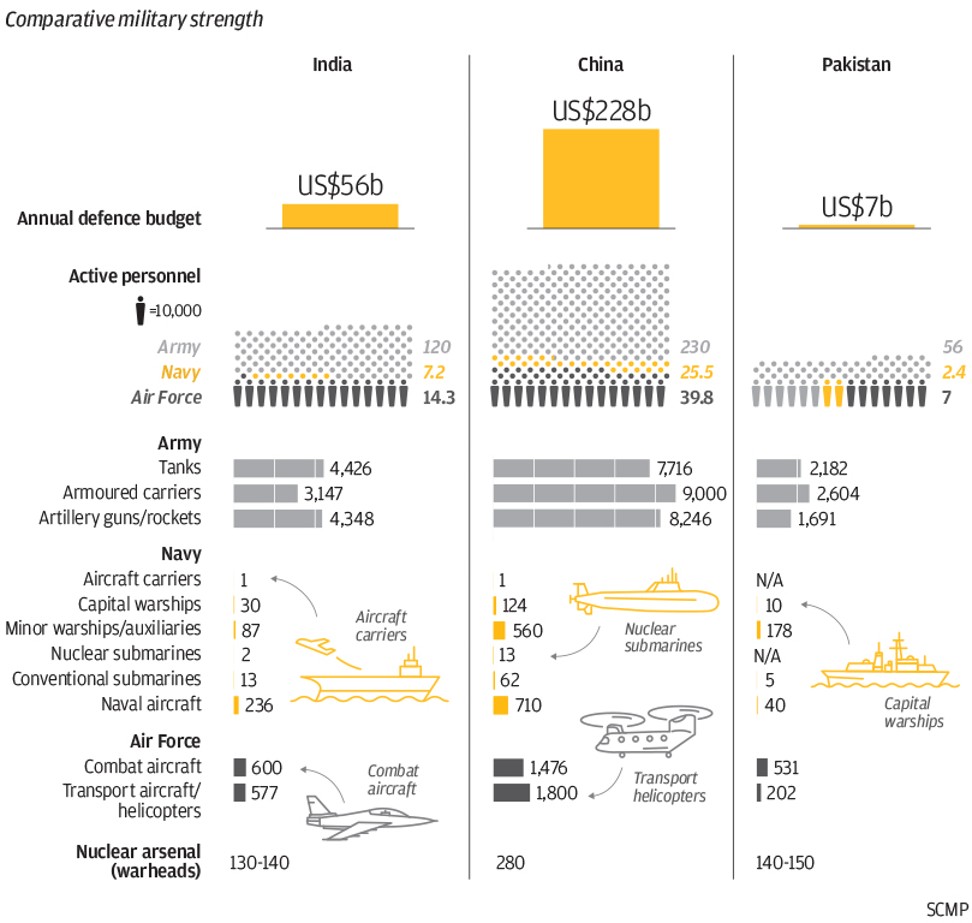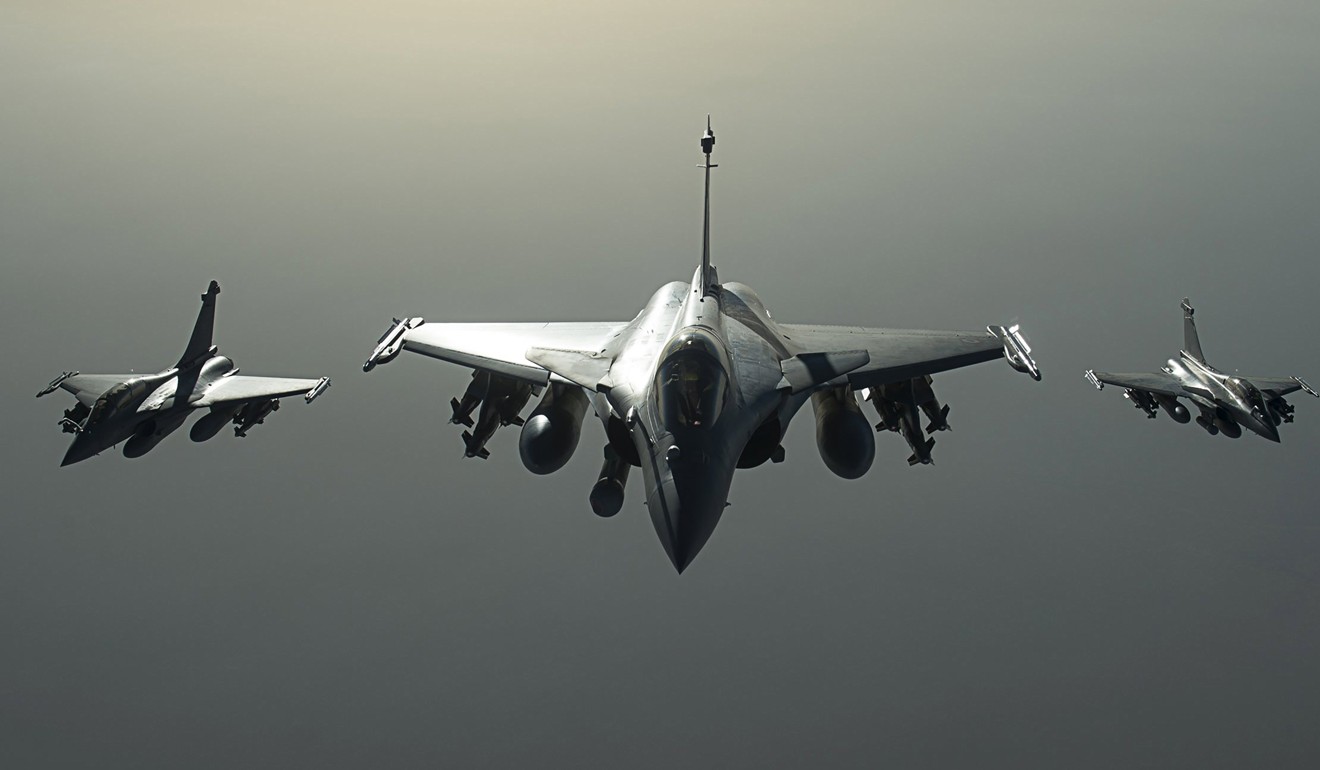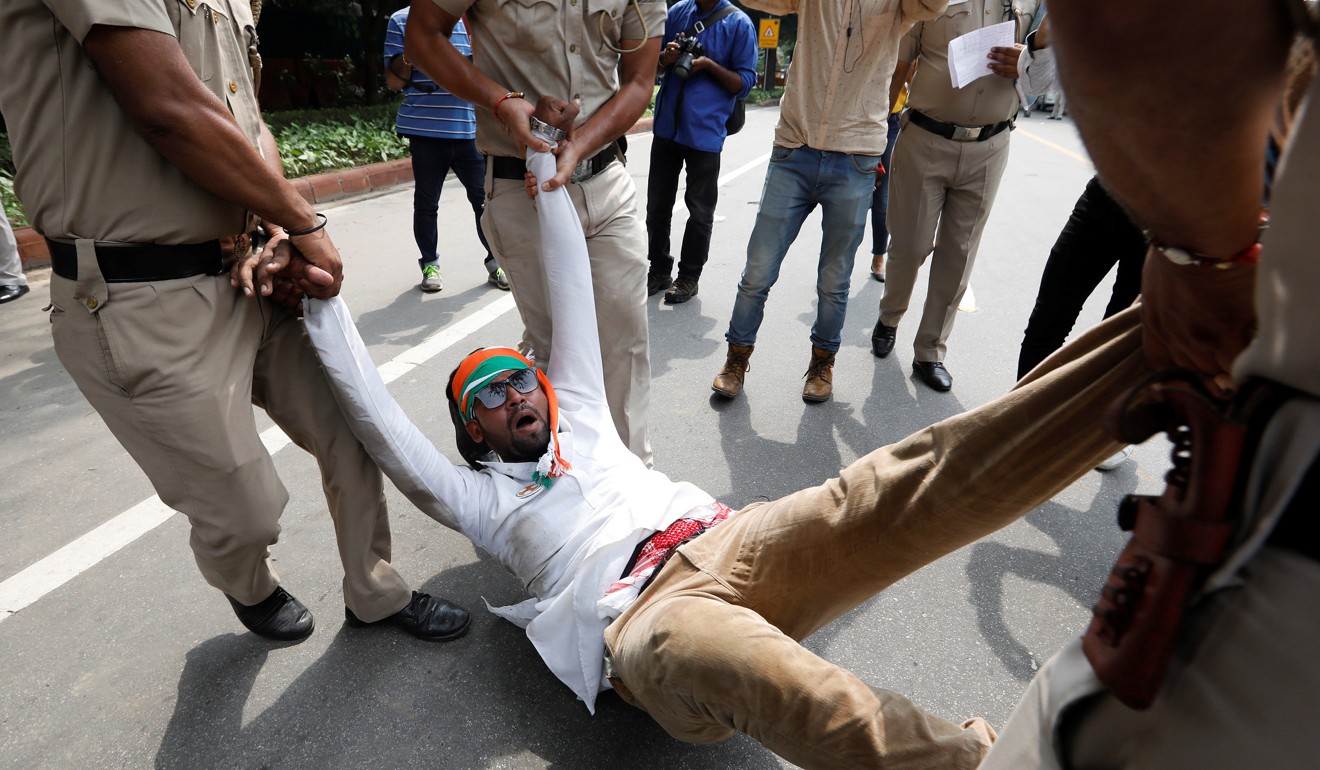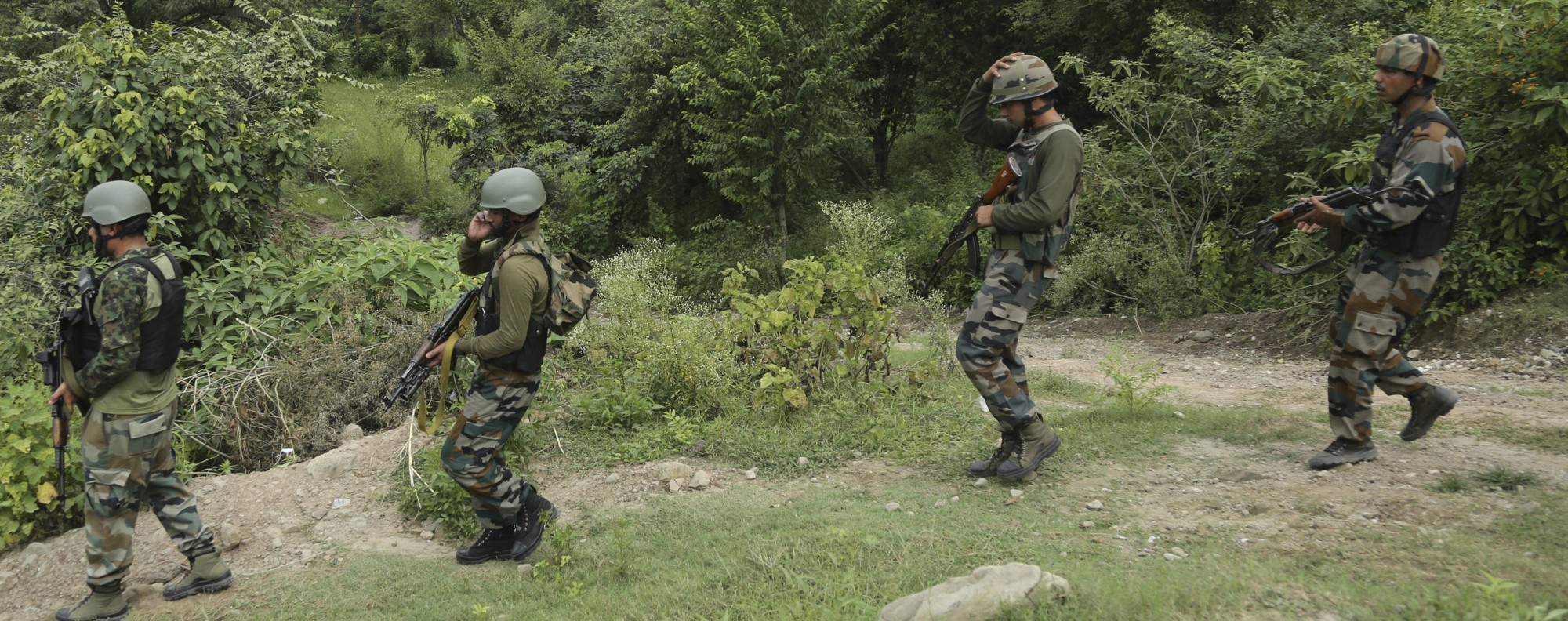
How Modi’s Rafale defence deal has left India lagging China, Pakistan
India puts defence preparedness on the back burner as a result of the controversy over the purchase of Rafale fighter aircraft, even as regional rivals continue to arm rapidly
By Ajai Shukla
The Indian government, rattled by a vocal opposition campaign that has charged it with financial wrongdoing and endangering national security over the purchase of 36 Rafale fighter aircraft from French company Dassault, is now soft-pedalling the purchase of other weapons badly needed by its overstretched and ill-equipped military.
In March, a senior general testified before a parliamentary defence committee that more than two-thirds of the army’s equipment was obsolete, while only eight per cent was state-of-the-art. The navy and air force were only slightly better off. Yet Prime Minister Narendra Modi’s Bharatiya Janata Party (BJP) government, which faces general elections next year, is loath to risk the political controversy that it fears might stem from buying more weaponry abroad.
Defence Ministry sources have ruled out early tendering for the announced purchase of 110 medium fighters, worth an estimated US$15 billion to US$18 billion. This means the Indian Air Force (IAF) must make do with just 31 squadrons of fighter aircraft – 11 short of its authorised 42 squadrons, which planners believe are essential for a “two-front war” against regional adversaries China and Pakistan, if they were to join forces.
Nepal bares China-tempered steel. India better get used to it
Nor is early movement likely on the Indian Navy’s global procurement of 57 fighters, or an aircraft carrier that is to be built in the country. Meanwhile, the US$6 billion purchase of the S-400 Triumf air defence missile system from Russia, which was earmarked to be signed during an India-Russia summit next month, is likely to be postponed.
Also shifted to the back burner is the US$6 billion purchase of six conventional submarines and army equipment such as armoured vehicles and assault rifles.
By contrast, China and Pakistan are continuing to arm rapidly. Beijing is selling Islamabad its increasingly sophisticated fighter aircraft, warships and ground systems, building up Pakistan as its cat’s paw in South Asia. The capability gap between Indian and Chinese armed forces, already worrying for New Delhi planners, is growing inexorably. Even Pakistan, which once feared an existential threat from India, now talks confidently of halting the Indian military without having to trip the nuclear threshold.
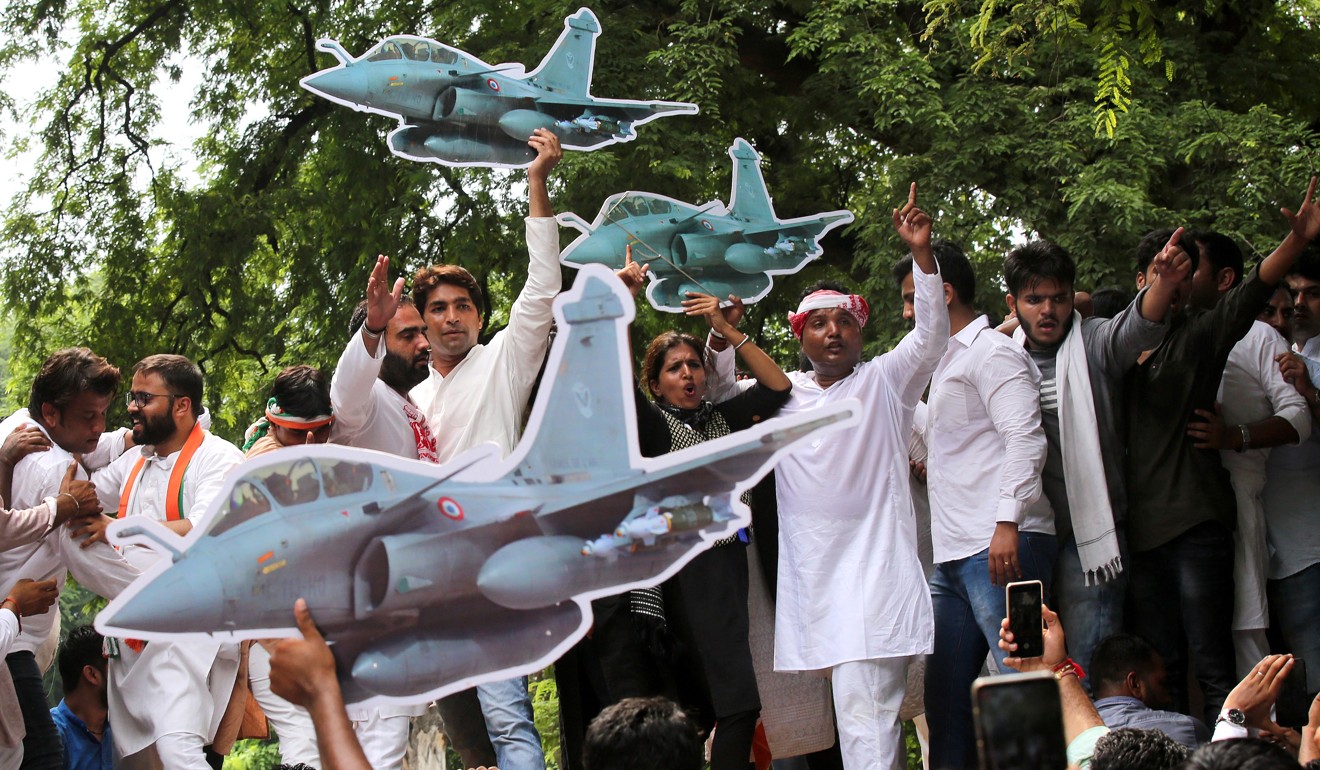
Alleged corrupt practices relating to the Rafale deal have sparked protests in New Delhi. Photo: EPA
The controversy over the Rafale has further tilted the regional military balance against India.
Since the turn of the century, military planners in New Delhi have grappled with the question of how to replace hundreds of obsolete IAF MiG-21, MiG-23 and MiG-27 fighters that have been steadily retired from service. They were to be replaced by the indigenous Tejas fighter but, in 2001, with the fighter’s development significantly delayed, the IAF backed Dassault’s offer to shift an entire production line to India to build large numbers of the Mirage 2000 fighter, which the IAF already flew and rated highly. However, the BJP government of that time, apprehensive of controversy over single-vendor procurement, ordered a global tender for 126 medium multi-role combat aircraft, of which 108 would be built in India by public sector firm Hindustan Aeronautics Limited (HAL).
Click to enlarge
By 2007, when the IAF framed its requirements and issued the tender, the Congress Party-led United Progressive Alliance (UPA) was in government. Over the next four years, the IAF flight-tested six fighters: Boeing’s F/A-18 Super Hornet, Lockheed Martin’s F-16IN Super Viper, Saab’s Gripen C/D, the Russian MiG-35, Eurofighter’s Typhoon, and the Rafale. In 2011, the Typhoon and the Rafale were found to have met the IAF’s performance requirements. In January 2012, Dassault’s bid was declared lower than Eurofighter’s and the Rafale became India’s combat aircraft of choice.
Extended negotiations over the next two years remained inconclusive, with Dassault reluctant to take responsibility for the Rafales that HAL would build. In May 2014, the BJP returned to power and negotiations continued for another 11 months. A breakthrough seemed imminent in March 2015, when Dassault chief, Eric Trappier, announced in India that he expected the deal to be finalised soon.
At this delicate juncture, Prime Minister Narendra Modi sprang a bombshell. Taking the IAF and his own officials by surprise on a state visit to Paris, Modi announced that he had asked French President Francois Hollande for 36 Rafale fighters in “flyaway condition”. The Modi-Hollande joint statement noted that the Rafales would be cheaper than what Dassault had quoted in the tender, but would have the same configuration. This amounted to a death knell for the tender, and New Delhi duly announced its cancellation.
The Indian Air Force fields just 600 fighters against the 2,000 China and Pakistan can marshal between them. Photo: Reuters
For the IAF, which fields just 600 fighter aircraft against the 2,000 that China and Pakistan can marshal between them, the cancellation of the 126-aircraft tender and its replacement by a contract for just 36 fighters leaves it short of 90 fighters. And with the government going slow on further procurements, this deficit is likely to deepen.
Late last year, the Congress party, led by Gandhi family scion Rahul Gandhi, launched a multi-pronged attack on the Rafale contract. Its centrepiece was the charge that the government had compromised national security by replacing a near-complete 126-Rafale purchase with a deal for just 36 fighters. The government has argued variously that negotiations were stalled on the 126-fighter tender, that HAL was incapable of building the Rafale in India, and that Modi had pushed through the purchase of 36 fighters to meet the IAF’s urgent requirements, and more would follow later.
Fascist fest as Trump’s America meets Modi’s Hindus
But those claims are contradicted by two inconvenient facts: the “emergency purchase” will be fully delivered only by 2022; and, with the more recent tender for 110 fighters still stalled, no further aircraft are in sight. The opposition is also charging the government with paying three times as much per Rafale than what the UPA government had negotiated in the 126-fighter contract. The government’s response that the fighters it has bought are more capable runs up against the fact that the Modi-Hollande joint statement stipulates an equivalent configuration.
The government could simply prove its claims by releasing details of both the tender and the current contract. Instead, it has raised suspicion by first promising to release the details and then backtracking, citing a confidentiality agreement with France. When asked in March on a visit to India whether the confidentiality agreement covered commercial details, French President Emmanuel Macron dodged the question, stating it was up to the Indian government to decide what it would release.
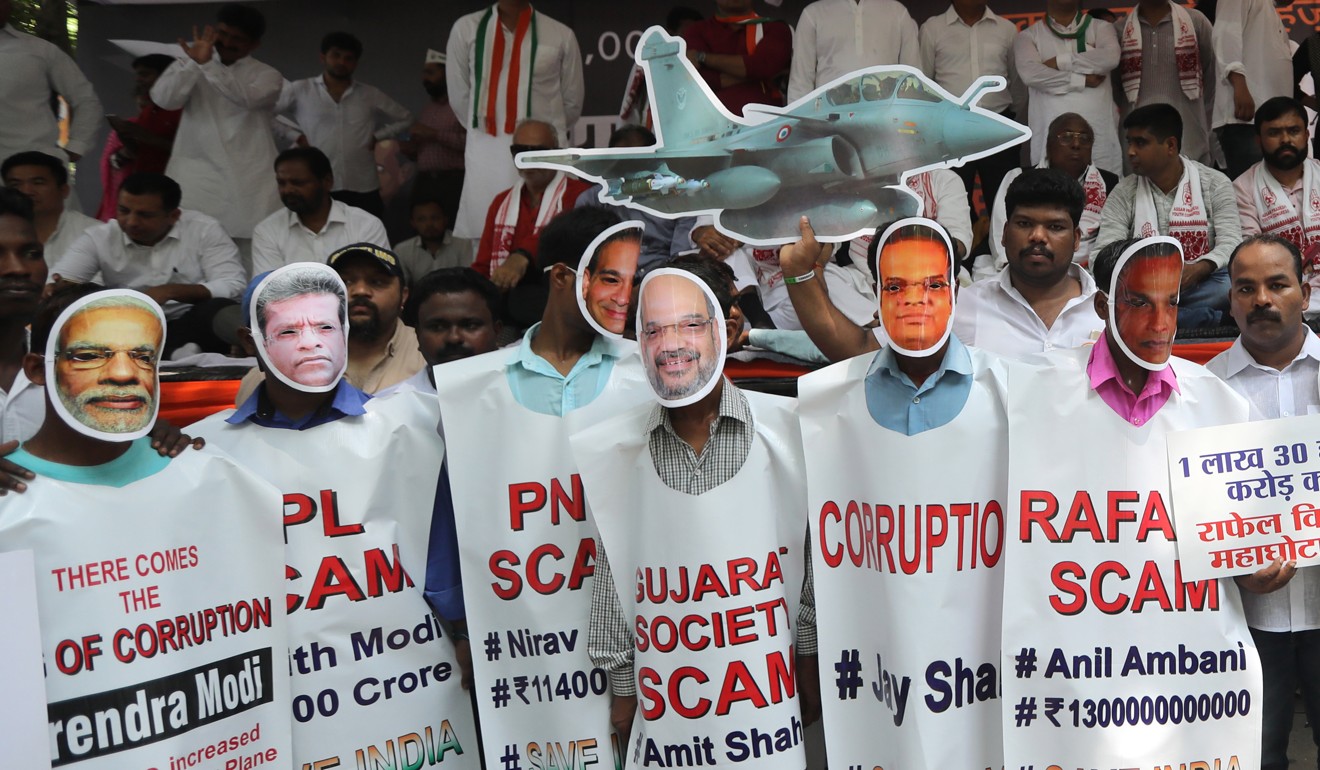
The opposition has accused India’s government of paying three times as much per Rafale fighter than originally negotiated. Photo: EPA
Paris and New Delhi are firmly aligned on tamping down the Rafale controversy. Until 2015, the Rafale was the world’s worst-selling production fighter. With no export orders, budget constraints had forced even the French military to slash its initial commitment to buying the Rafale from 336 to just 272 aircraft. Actual orders have been placed for just 180 fighters.
To keep the Rafale production line rolling in the wait for more orders, Dassault had slowed production to just 11 fighters annually. Some relief came when Egypt – the first foreign buyer – contracted for 24 Rafales in February 2015 and a Qatari order for another 24 followed in May. Even so, an order from the Indian Air Force, internationally known as a hard customer to please, was important for the fighter’s credibility. Further, having the Rafale inducted in service and its components going into initial production in India would position it nicely for competing for the IAF’s 110-fighter procurement and the Indian Navy’s separate 57-fighter tender.
China and India: are war clouds gathering over Doklam again?
The opposition also alleges Modi’s 36-Rafale contract abandons even the pretence of domestic manufacture and the opportunity for boosting India’s aerospace capability. Cutting out HAL, Anil Ambani – a businessman from Modi’s home state, Gujarat, who is widely regarded as being close to the BJP – emerged as Dassault’s key partner for discharging offset liabilities, an Indian counter-trade arrangement that requires arms vendors to plough back a percentage of their earnings into the Indian defence industry.
Although Ambani’s Reliance Group has never manufactured a single aerospace component, it formed a joint venture with Dassault called Dassault Reliance Aerospace Limited (DRAL), which Ambani admits will benefit from close to a billion dollars in offset-related manufacture. Unsurprisingly, the opposition has charged Modi with crony capitalism, a charge the government counters by pointing out that offset rules allow Dassault to choose its own Indian “offset partner”.
Hollande on Friday added to the controversy by saying New Delhi had forced Dassault to pick Ambani. “We did not have a say in that,” Hollande, who was president from 2012 to 2017. told investigative website Mediapart.
“It was the Indian government that proposed this group (Reliance), and Dassault which negotiated with Ambani.We did not have a choice, we took the interlocutor who was given to us,” he said.
Police officers detain an activist of the youth wing of India’s main opposition Congress Party during a protest over the Rafale deal. Photo: Reuters
Modi is also facing criticism for announcing the Rafale buy without due procedure, which requires major defence procurements to be cleared beforehand by the military, the defence ministry and the union cabinet. His party counters that clearance was obtained before the contract was inked, but the opposition says it should have preceded Modi’s big announcement.
Indeed, a more deliberate consideration might well have concluded that, instead of allowing Dassault to negotiate from the favourable position of a single vendor, competition could have been injected in the bidding by introducing Eurofighter GmbH into what was effectively a fresh procurement. The Eurofighter Typhoon had, like the Rafale, met the IAF’s performance requirements; and, in June 2015, Eurofighter had written to the government offering to reduce by 20 per cent the price it had quoted for the Typhoon.
As old values die, how will India’s new Modi-loving middle class shape the future?
The Rafale procurement is now before the Comptroller and the Auditor General, India’s top auditor, which will scrutinise the process for procedural correctness. The opposition, visualising this as a political opportunity, wants to bring the issue before a joint committee of parliament. Either way, the “Rafale scam” has become the latest phrase in India’s rich lexicon of defence procurement controversies. The BJP is understandably worried.
In 1989, after the apparently crooked procurement of artillery guns made the Swedish arms manufacturer “Bofors” a byword for corruption in arms deals, the then-Congress government was voted out of power. Now in the opposition, the Congress is looking to make Rafale the BJP’s Bofors-scandal equivalent.

